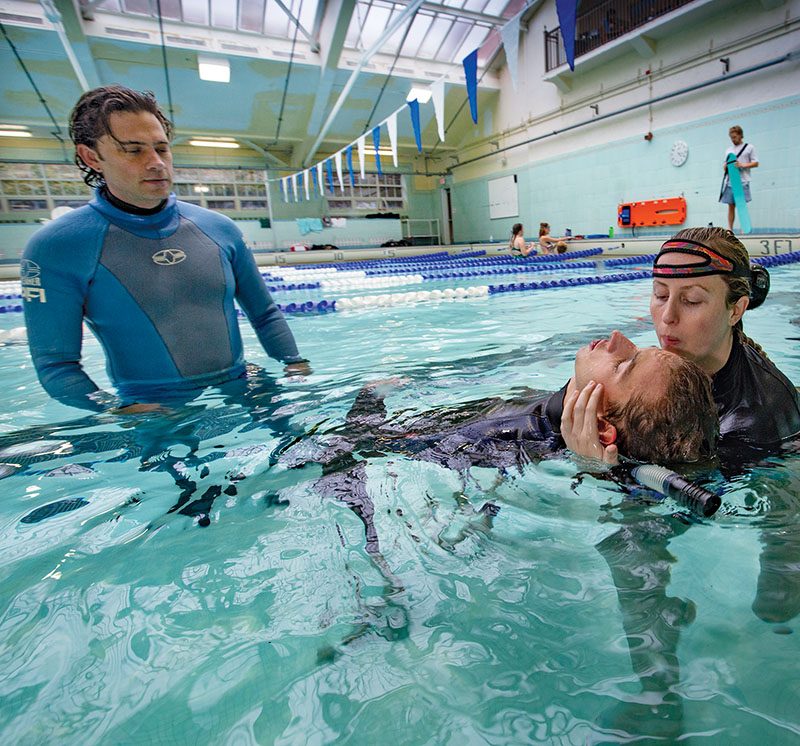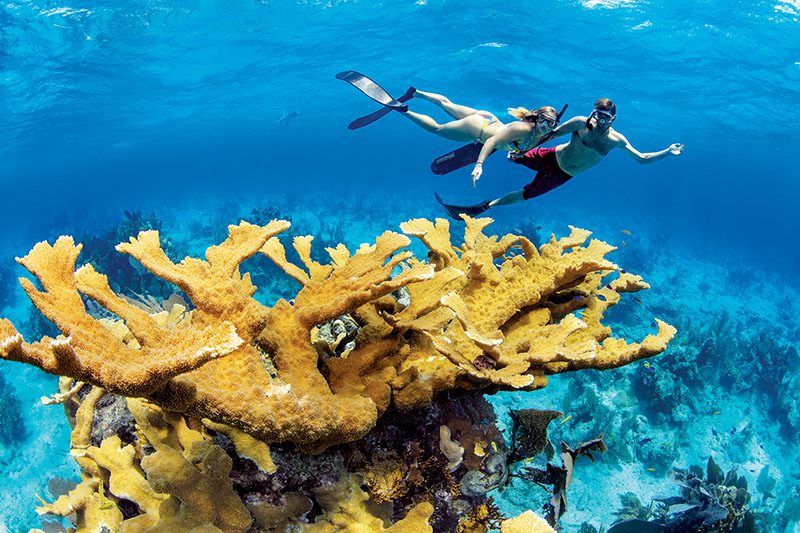Minat terhadap penyelaman dengan menahan napas, yang juga dikenal sebagai penyelaman bebas, telah berkembang pesat selama dekade terakhir. Sebagian besar orang yang menyukai olahraga air pernah menahan napas di bawah air pada suatu saat, tetapi sebagian besar melakukannya tanpa pelatihan formal atau kesadaran akan bahaya yang diketahui meskipun informasi tentang penyelamatan nyawa ini sudah tersedia. Namun, jika dilakukan dengan aman, menyelam sambil menahan napas dapat menjadi pengalaman yang menggembirakan.
With the rise in freediving’s popularity across many different water sports comes large numbers of beginners who are seeking formal training. Such training offers attainable physical and mental goals with many benefits for mental and physical health and enhanced self-esteem. It also requires strict adherence to safeguards. Disregarding safety measures can bring serious risks to your lungs and brain and even result in death. Understanding the known risks and taking action to mitigate them are central to successfully enjoying any activity, and freediving is no exception.
Pelatihan formal dari instruktur penyelaman bebas bersertifikat, yang ditawarkan oleh berbagai lembaga pelatihan, memberikan dasar-dasar keselamatan penyelaman bebas. Instruktur akan menekankan banyak konsep penting selama pelatihan Anda. Dua prinsip yang paling penting dan sering diulang adalah jangan pernah menahan napas saat menyelam sendirian dan hindari hiperventilasi sebelum menyelam.
Once certified, you’ll know how to incorporate strict safety standards into every dive, no matter how trivial they may seem. The dive briefing, which should happen before every breath-hold dive, will include analyzing risks, addressing specific concerns regarding the planned dives, and reviewing breath control, rescue techniques, and resuscitation.
Breath control is a critical point that some freedivers overlook, but it directly affects your body’s oxygen and carbon dioxide levels. Breathing is an autonomic function of the human body and can reflect internal changes in the body’s state.
Carbon dioxide is a powerful stimulant for breathing — our urge to breathe increases when we have excess carbon dioxide. Exercise or breath-holding can increase carbon dioxide and decrease oxygen levels. Lower oxygen levels (hypoxia) provide a much weaker stimulus to breathe but may be the only stimulus if we have lower carbon dioxide levels in our blood. When we hyperventilate, we lower our carbon dioxide levels and remove the powerful, carbon-dioxide-induced urge to breathe.


How do you know when to come up during a breath-hold dive? The urge to breathe is your preservation mechanism, so carbon dioxide serves as a life-preserving stimulant. Without the urge to breathe, a freediver will not know when to come up for air, even if they become dangerously hypoxic. In addition, your awareness will be compromised once hypoxia sets in, and you can become unconscious while underwater, which may result in drowning if your buddy and the safety team don’t effectively rescue you.
Oxygen in blood is mainly bound to hemoglobin for transportation, while carbon dioxide is mostly dissolved. When carbon dioxide levels drop, the blood’s chemical properties change. Blood pH rises, which strengthens the bond between hemoglobin and oxygen, resulting in oxygen not being adequately released into vital tissues, particularly the brain. When the brain doesn’t have enough oxygen to sustain normal function, it will attempt to preserve the primary functions — breathing and heartbeat — while ceasing others, such as consciousness, thought, and motor control.
Dengan mengingat informasi tersebut, penyelam bebas harus menyadari bahwa kesadaran akan pernapasan mereka sangat penting untuk keselamatan. Kita terlahir dengan kode genetik dengan beberapa mekanisme evolusi yang tersisa untuk bertahan hidup di bawah air untuk waktu yang terbatas. Menyelam bebas adalah praktik membuka mekanisme tersebut secara aman, ilmiah, dan holistik.
Ada banyak pola pernapasan, dan dua komponen yang paling penting adalah volume tidal dan hiperventilasi. Untuk menjelaskan volume tidal, pertimbangkan dua contoh berikut: Bayangkan pernapasan Anda saat Anda tertidur sambil menonton TV di tempat tidur atau napas yang hampir tidak akan membuat nyala api berkedip di dekat bibir Anda.
Explaining hyperventilation is not as simple. The concise definition is any manipulation of your breathing that drops your carbon dioxide levels. Carbon dioxide is our safety net, so we put ourselves at risk if we eliminate too much of it. Any pattern of breathing that decreases our body’s natural balance of carbon dioxide is considered hyperventilation. Long exhalations, exhaling more volume, and rapid breathing all lower carbon dioxide levels.
Cara ideal untuk bernapas sebelum menyelam bebas adalah mempertahankan volume tidal hingga tarikan napas terakhir. Bernapas secara normal lebih mudah diucapkan daripada dilakukan. Hiperventilasi dapat terjadi secara tidak sengaja; Anda harus memperbaikinya sebelum mencoba menyelam dengan menahan napas.
Menyelesaikan pelatihan yang tepat dan memberikan interval permukaan yang memadai untuk pemulihan di antara penyelaman adalah penting untuk mengoptimalkan teknik pernapasan yang tepat. Mematuhi pelatihan dan panduan yang diberikan akan meningkatkan keselamatan dan kenikmatan Anda dalam aktivitas ini.
Singkatnya, jangan bernapas berlebihan, dan selalu miliki teman menyelam yang cakap yang berdedikasi untuk mengawasi Anda dengan cermat di seluruh kolam renang atau penyelaman bebas di perairan terbuka pada kedalaman berapa pun.
© Penyelam Siaga - Q1 2023